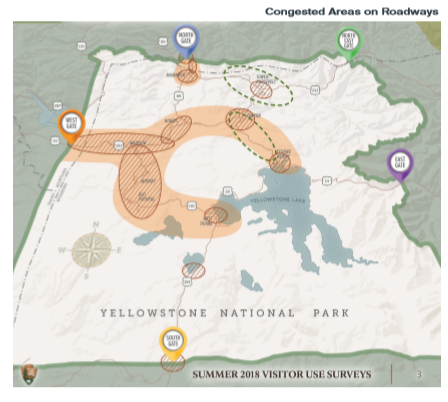Visitor management is an increasingly important topic for the National Park Service. In 2018, Yellowstone National Park sought to identify how visitors’ perceptions of their experience changed over time and at different locations in the park in the face of growing crowds. Park leaders needed to understand if the quality of the experience was being impacted and where the impacts may be occurring. The Park partnered with RRC Associates, Otak Inc. and the University of Montana to study visitor experiences in real-time to answer these questions.
A new, innovative methodology was needed to address the research objectives. The RRC team developed a mobile application that would 1) deliver surveys to visitors as they moved throughout the park, and 2) track visitors’ GPS location throughout their day. Visitors were given tablets at one of the five entrances in Yellowstone to take on a full day of their experience. As visitors left specific sites in the Park, the application prompted the visitor to participate in a short survey about their experience at that site related to crowding and related issues. At the same time, the tablet would collect GPS data to calculate route speed, parking wait times, and overall travel patterns that would link to their survey responses.
Results from this study provided Yellowstone management with an unprecedented volume of data and insights into visitor behavior and perceptions. This study was a first for National Parks and protected area research, adopting this brand-new methodology to dive deeper into the visitor experience. Yellowstone leaders has since utilized the data to improve their staffing at sites with identified issues, improve the seasonal planning process and explore ways to improve the visitor experience in the Park.
back to case studies
